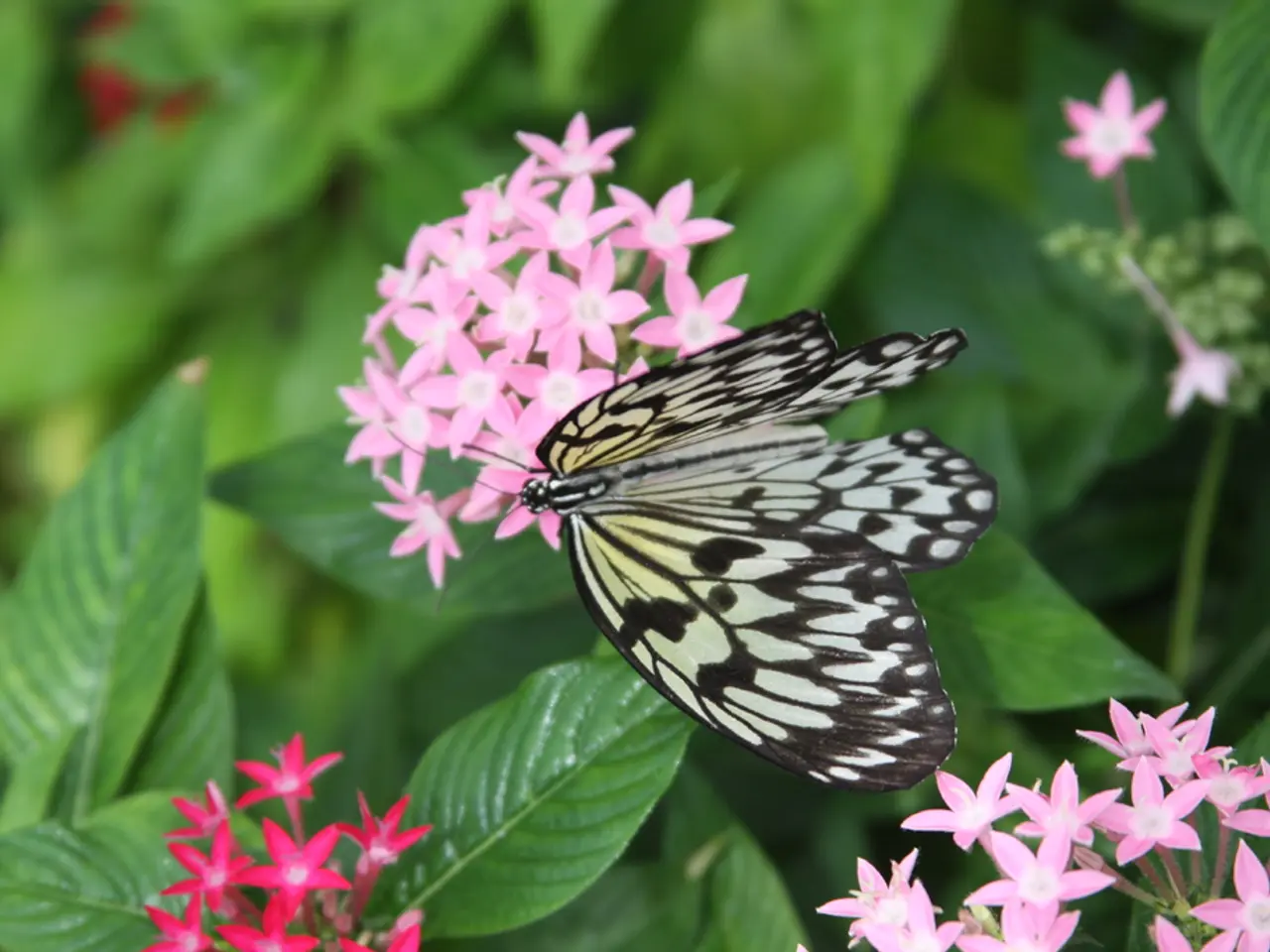Dwindling numbers of Monarch butterflies
In recent years, the monarch butterfly, known for its iconic black, white, and reddish-orange wings, has faced a significant decline in numbers. This vibrant species migrates up to 2,800 miles annually, but its population has been dwindling for two decades.
The monarch butterfly's annual migration is recognised as an "endangered biological phenomenon" by the International Union for the Conservation of Nature. The cause of this decline can be attributed to several factors, including habitat destruction, climate change, and the reduction of essential food sources.
Habitat destruction, such as new roads, housing developments, and agricultural expansion, has played a key role in the monarch's decline. Additionally, the increasing reliance on herbicides by farmers has reduced the availability of milkweed plants, a key food source for monarch butterflies. The nectar content of milkweed plants has also been affected by hot weather, further impacting the butterflies.
Organisations in the USA, such as Monarch Joint Venture, Xerces Society, Pollinator Partnership, and The Nature Conservancy, are working tirelessly to restore monarch butterfly habitats. Their efforts have provided some relief, but the outcome of current conservation efforts is uncertain.
The North American Monarch Conservation Plan, published by the Commission for Environmental Cooperation in 2008, established a conservation blueprint for the butterflies. Key aspects of the plan include the creation of incentives for the conservation of overwintering sites and the restoration of breeding habitat throughout the butterfly's extensive range.
The Mexican government, in collaboration with organisations like WWF, has also taken steps to protect critical monarch populations. Restrictions on logging in areas crucial to the butterflies have been implemented to preserve their habitats.
Despite these efforts, the area of forest occupied by overwintering monarchs in Mexico has decreased by 59% since December 2011. Overwintering populations along the California coast have also seen a dramatic decrease, with numbers shrinking from over a million individuals in 1997 to less than 60,000 in 2009.
For those interested in learning more about the monarch butterfly and its conservation, resources such as Monarch Watch's website (www.monarchwatch.org) and the WWF's website (www.worldwildlife.com) are excellent starting points. The Mexican National Commission of Natural Protected Areas' website (www.conanp.gob.mx) also provides valuable information about the conservation efforts in Mexico.
As the world continues to face challenges in preserving biodiversity, the decline of the monarch butterfly serves as a stark reminder of the importance of conservation efforts. By working together, we can help ensure the survival of this iconic species and protect the delicate balance of nature.








